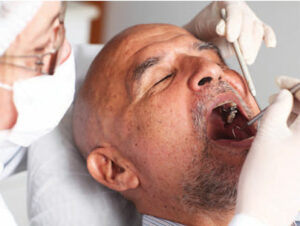Sociodemographic Disparities Noted In Oral Cancer Screening Rates
Dental professionals play an important role in identifying oral and oropharyngeal cancer through oral cancer screenings, as early detection significantly improves patient survival rates.

Dental professionals play an important role in identifying oral and oropharyngeal cancer through oral cancer screenings, as early detection significantly improves patient survival rates. But not all patients are screened for oral cancer during dental visits, particularly minority and lower-income individuals, according to a study, “Disparities in Oral Cancer Screening Among Dental Professionals: NHANES 2011–2016,” published in the American Journal of Preventive Medicine.
The disparities were independent of two major risk factors for oral cancer: smoking and alcohol consumption. Researchers say these findings indicate patients are not necessarily being screened based on risk profile, but, rather, on sociodemographic characteristics.
Researchers at Brigham and Women’s Hospital in Boston looked at a nationally representative sampling of civilian, noninstitutionalized individuals in the United States from 2011 to 2016 who had seen a dentist in the previous two years. Patients age 30 and over self-reported if they had received an intraoral or extraoral exam with screening. Of these individuals, 37.6 % reported receiving an intraoral exam and cancer screening, while 31.3% reported receiving an extraoral exam and screening.
After adjusting for various risk factors (race/ethnicity, sex, age, marital status, education, health insurance status, smoking status, number of alcoholic drinks per week, and poverty-income ratio) the researchers found oral cancer screening rates were much lower among racial minorities, lower-income groups, and those who were uninsured or publicly insured. The team suggests that understanding the reasons for what it terms “discriminatory oral cancer screening” could lead to the development of effective — and more inclusive — interventions.
From Decisions in Dentistry. November/December 2019;5(10):10.


